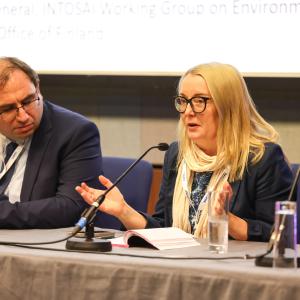
Image Credit: iStock
Q. How does scenario planning differ from traditional forecasting?
RR: Forecasters work with modelled distributions of past facts to predict the future. Scenario planning complements forecasting by doing the opposite.
It rehearses unforecastable – but imaginable – plausible futures that might unfold and allows preparation for them.
If a strategy is married to one forecast, with an x percentage probability that it fails to unfold, it lacks a well worked-out alternative.
Forecasters attach probabilities to their outcomes, whereas we do not – largely because it is impossible to do.
Scenario planning in the Oxford approach is uninterested in approximating the truth – it is interested in serving usefulness.
TL: The world has become so interdependent, complex and dynamic that forecasting with sufficient accuracy to be useful is very difficult.
Scenario planning provides an alternative way of engaging with the uncertainty of the future.
It helps leaders interpret potential developments, opportunities and risks to experiment with new options.
Q. Why has Covid-19 brought scenario planning back into the spotlight?
RR: The pandemic is a good exemplar of the kind of deep uncertainty that scenario planning is helpful with.
The whole set of assumptions are nothing to do with the assumptions that finance officers were using back in January.
After events such as 9/11 and the global financial crisis, Covid-19 drives home that deep uncertainty is something that is here with us to stay.
We cannot pretend such events are ‘Black Swan’ phenomena.
They are ‘normal’, and we needs tools to engage with that.
People have realised that forecasting does not do it well and are asking what else is available in the shop.
TL: Covid-19 is a classic example of exponential growth – growth that starts slowly then, at a tipping point, accelerates rapidly.
The story of the lily pond that was half covered by day 47 and completely covered by day 48 is an example.
Exponential growth can be disorientating and challenging – cognitive psychologists find people are biased to assume that growth unfolds in a linear way.
The Covid-19 exponential change heightened awareness of deep uncertainty, and I think leaders saw scenario planning as something that could help them more than trying to forecast specific outcomes.
Q. How can public sector finance directors use scenario planning?
TL: Public sector finance directors can use scenario planning to lead strategic conversations about financial matters in their departments or across government.
There is a famous expression in Washington: ‘If you are not at the table, you could be on the menu’.
Scenario planning offers the opportunity for finance directors to not only be at the table for the important strategic conversations in their organisations but potentially to lead them.
Q. What are the challenges to adoption of scenario planning by the public sector?
RR: Decision-makers need to exit year-by-year budgeting and adopt a philosophy that engages with deep uncertainty and does not kick it down the road for future populations to have to live with the consequences.
It is not about us telling them, ‘Look, you could be facing a more severe pandemic in five years’.
It is about their becoming more proactive, systematic and courageous.
They need to learn that the right questions to ask are not ones for their successors to ask.
We advise people to talk to peers who have used the scenario planning process – it is much more useful than talking with professors.




















